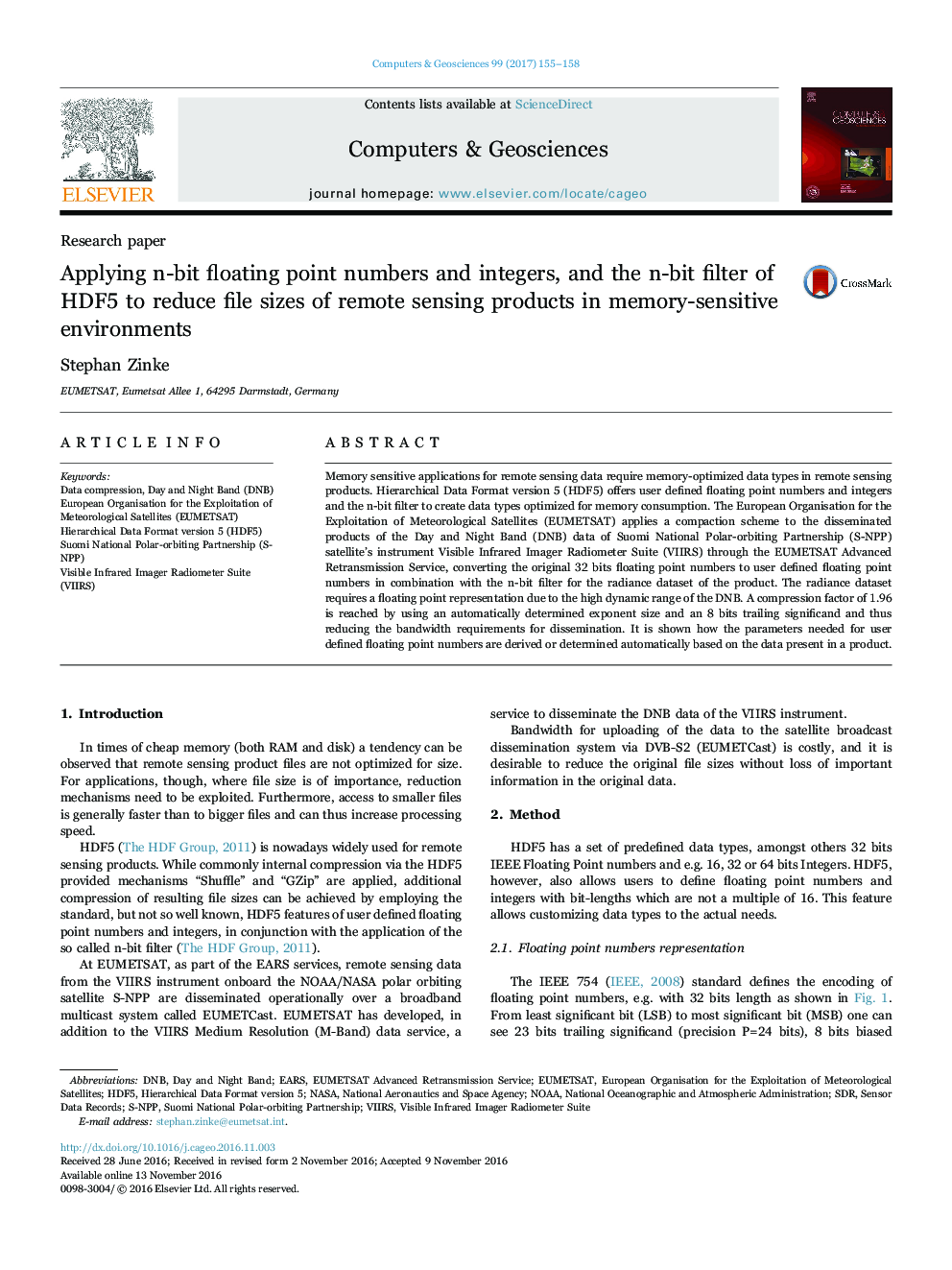| کد مقاله | کد نشریه | سال انتشار | مقاله انگلیسی | نسخه تمام متن |
|---|---|---|---|---|
| 4965463 | 1448285 | 2017 | 4 صفحه PDF | دانلود رایگان |
عنوان انگلیسی مقاله ISI
Applying n-bit floating point numbers and integers, and the n-bit filter of HDF5 to reduce file sizes of remote sensing products in memory-sensitive environments
دانلود مقاله + سفارش ترجمه
دانلود مقاله ISI انگلیسی
رایگان برای ایرانیان
موضوعات مرتبط
مهندسی و علوم پایه
مهندسی کامپیوتر
نرم افزارهای علوم کامپیوتر
پیش نمایش صفحه اول مقاله

چکیده انگلیسی
Memory sensitive applications for remote sensing data require memory-optimized data types in remote sensing products. Hierarchical Data Format version 5 (HDF5) offers user defined floating point numbers and integers and the n-bit filter to create data types optimized for memory consumption. The European Organisation for the Exploitation of Meteorological Satellites (EUMETSAT) applies a compaction scheme to the disseminated products of the Day and Night Band (DNB) data of Suomi National Polar-orbiting Partnership (S-NPP) satellite's instrument Visible Infrared Imager Radiometer Suite (VIIRS) through the EUMETSAT Advanced Retransmission Service, converting the original 32 bits floating point numbers to user defined floating point numbers in combination with the n-bit filter for the radiance dataset of the product. The radiance dataset requires a floating point representation due to the high dynamic range of the DNB. A compression factor of 1.96 is reached by using an automatically determined exponent size and an 8 bits trailing significand and thus reducing the bandwidth requirements for dissemination. It is shown how the parameters needed for user defined floating point numbers are derived or determined automatically based on the data present in a product.
ناشر
Database: Elsevier - ScienceDirect (ساینس دایرکت)
Journal: Computers & Geosciences - Volume 99, February 2017, Pages 155-158
Journal: Computers & Geosciences - Volume 99, February 2017, Pages 155-158
نویسندگان
Stephan Zinke,